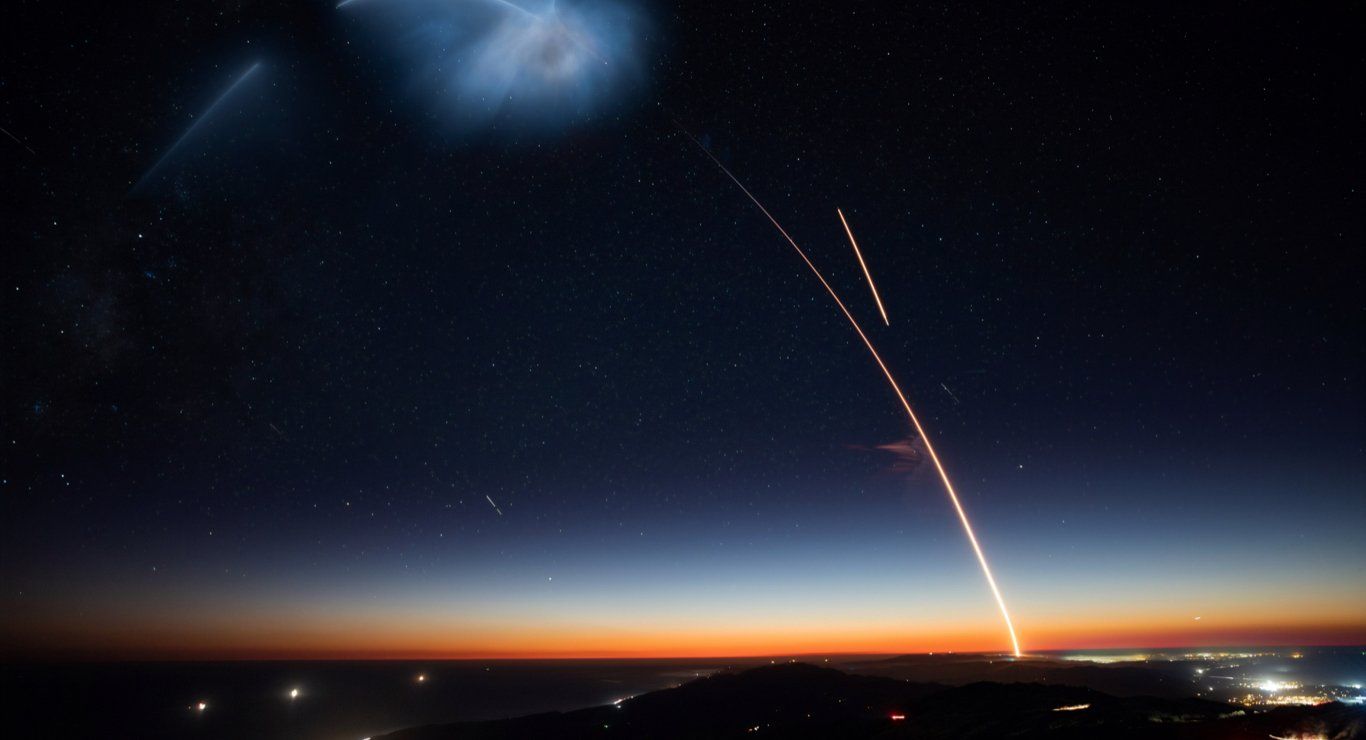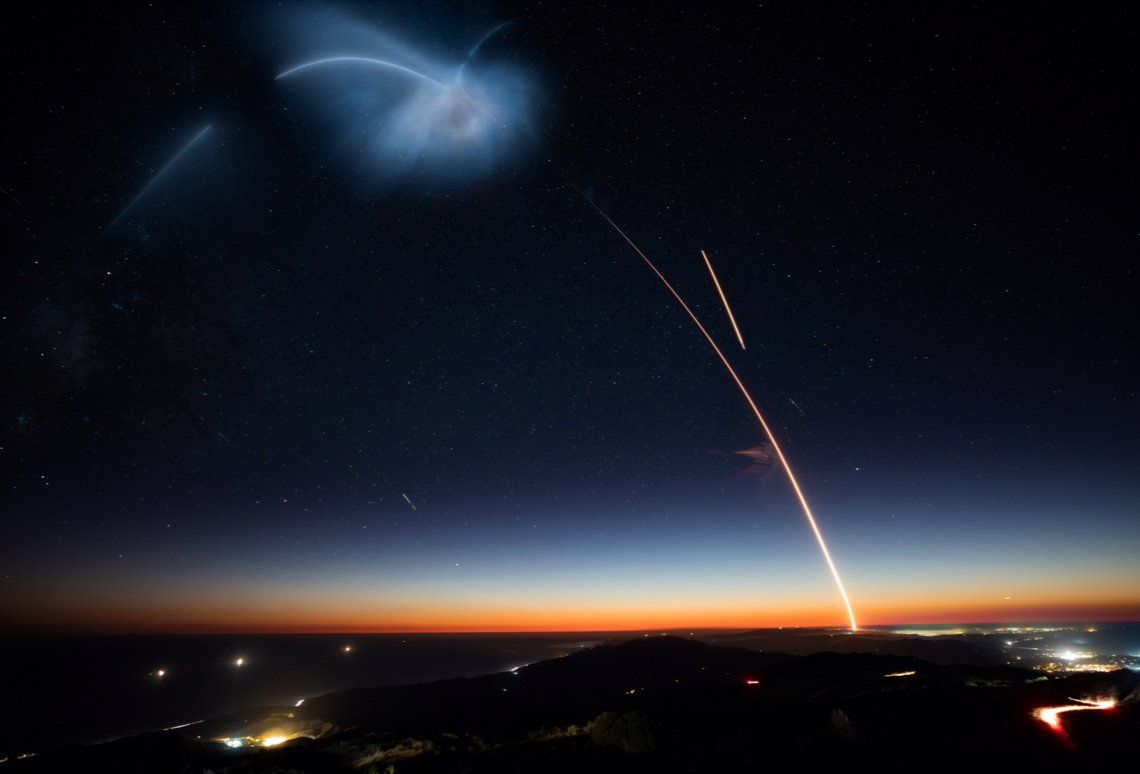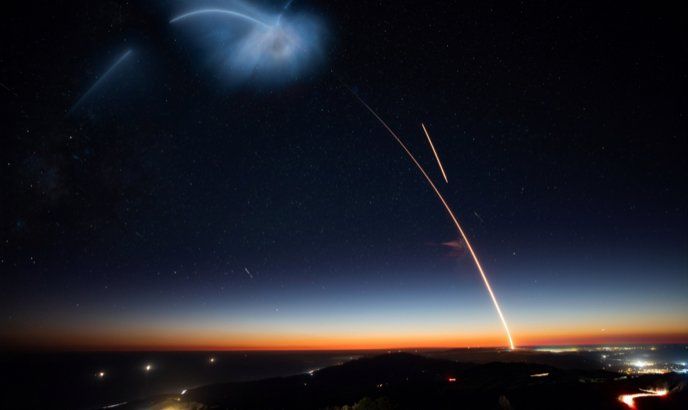25-29 April 2022
A premiere year, while China and India remain ambitious as ever

2022 still on course to be an exciting year for space. (Picture: Unsplash)
It’s been another busy week for the sector, with companies and governments declaring their intentions for the rest of 2022. Should all these remain on track, then this year will witness giant leaps, and that’s not even mentioning Starship and Artemis-1. India is growing in confidence as it announces cooperation with other space nations, but it’s China that have not shied away from announcing their latest intentions this week.
Giant leaps for the space sector
The week began with the news that Axiom-1 safely returned to Earth, in a privately funded and operated mission to the ISS, opening a new chapter in private human spaceflight. SpaceX, of course, haven’t been out of the news, and this week they demonstrated their ability to block an enemy attack on their Starlink system by preventing a Russian cyber attack in Ukraine. They did so by changing a single line of code. Also, Elon Musk’s mission to put his favourite cryptocurrency, Dogecoin, on the moon is still on schedule for this year (Doge-1), and this could represent the beginnings of a truly decentralised space economy. More and more we are seeing blockchain and themes of decentralisation being linked to space.
Private companies to show off their tech
AfIn another first, Rocket Lab will later today (29 April) demonstrate their innovative technology in attempting to catch their reusable rocket boosters mid-air, using a helicopter. Similarly, Japanese private firms have reaffirmed their intentions, with iSpace set to launch their lunar lander schedules to launch later this year, and carmaker Toyota premiering its lunar rover prototype earlier this month at the Space Symposium. Whilst the private sector continues to grow in strength, entrepreneurs at the Miami Tech Week conference said that governments need to embrace nontraditional business models and manufacturing approaches, and governments should invest in them, rather than allow them to source their capital only from VCs.
US, India and China all have big plans
INASA made a series of announcements, starting with its Psyche asteroid orbiter mission, to study the metallic asteroid of the same name. Also, they announced an additional 8 new missions, many of which are seen to be paving the way for further lunar exploration and missions to Mars. India also weighed in, and announced cooperation in space with over 60 nations, and its ongoing cooperation with the UK with satellite constellation OneWeb. They also presented its Chandrayaan-3 lunar lander for the first time, originally scheduled for August this year, but it could be pushed back to 2023.
The biggest players this week were China, making a series of announcements, which cement its place as a leading space nation. Firstly, an asteroid deflection test mission is set to launch in 2025, and they also announced “Phase-4” of their lunar exploration program, building up to the eventual establishment of a permanent science base at the lunar south pole. China are also considering a mission to bring back rock samples from the far side of the Moon, in what would be a first, and announced that they will start work on their lunar constellation to assist navigation in future lunar missions, possibly starting in 2023.
The dynamic of the space sector is changing quickly. With Russia being ever more excluded, it’s hard to say who will be the leader in space in the next 1, 2 or 10 years.
Want to keep up to date? Follow ANASDA
External Links
This Week
*News articles posted here are not property of ANASDA GmbH and belong to their respected owners. Postings here are external links only.
Our future in space

2022 still on course to be an exciting year for space. (Picture: Unsplash)
25-29 April 2022
A premiere year, while China and India remain ambitious as ever
Another busy week for the sector, with companies and governments declaring their intentions for the rest of 2022. Should all these remain on track, then this year will witness giant leaps, and that’s not even mentioning Starship and Artemis-1. India is growing in confidence, but it’s China that have not shied away from announcing their latest intentions this week.
Giant leaps for the space sector
The week began with the news that Axiom-1 safely returned to Earth, in a privately funded and operated mission to the ISS, opening a new chapter in private human spaceflight. SpaceX, of course, haven’t been out of the news, and this week they demonstrated their ability to block an enemy attack on their Starlink system by preventing a Russian cyber attack in Ukraine. They did so by changing a single line of code. Also, Elon Musk’s mission to put his favourite cryptocurrency, Dogecoin, on the moon is still on schedule for this year (Doge-1), and this could represent the beginnings of a truly decentralised space economy. More and more we are seeing blockchain and themes of decentralisation being linked to space.
Private companies to show off their tech
In another first, Rocket Lab will later today (29 April) demonstrate their innovative technology in attempting to catch their reusable rocket boosters mid-air, using a helicopter. Similarly, Japanese private firms have reaffirmed their intentions, with iSpace set to launch their lunar lander schedules to launch later this year, and carmaker Toyota premiering its lunar rover prototype earlier this month at the Space Symposium. Whilst the private sector continues to grow in strength, entrepreneurs at the Miami Tech Week conference said that governments need to embrace nontraditional business models and manufacturing approaches, and governments should invest in them, rather than allow them to source their capital only from VCs.
US, India and China all have big plans
NASA made a series of announcements, starting with its Psyche asteroid orbiter mission, to study the metallic asteroid of the same name. Also, they announced an additional 8 new missions, many of which are seen to be paving the way for further lunar exploration and missions to Mars. India also weighed in, and announced cooperation in space with over 60 nations, and its ongoing cooperation with the UK with satellite constellation OneWeb. They also presented its Chandrayaan-3 lunar lander for the first time, originally scheduled for August this year, but it could be pushed back to 2023.
The biggest players this week were China, making a series of announcements, which cement its place as a leading space nation. Firstly, an asteroid deflection test mission is set to launch in 2025, and they also announced “Phase-4” of their lunar exploration program, building up to the eventual establishment of a permanent science base at the lunar south pole. China are also considering a mission to bring back rock samples from the far side of the Moon, in what would be a first, and announced that they will start work on their lunar constellation to assist navigation in future lunar missions, possibly starting in 2023.
The dynamic of the space sector is changing quickly. With Russia being ever more excluded, it’s hard to say who will be the leader in space in the next 1, 2 or 10 years.
Want to keep up to date? Follow ANASDA
External Links
This Week
*News articles posted above are not property of ANASDA GmbH and belong to their respected owners. Postings here are external links only.
25-29 APRIL 2022
A premiere year, while China and India remain ambitious as ever.

2022 still on course to be an exciting year for space. (Picture: Unsplash)
It’s been another busy week for the sector, with companies and governments declaring their intentions for the rest of 2022. Should all these remain on track, then this year will witness giant leaps, and that’s not even mentioning Starship and Artemis-1. India is growing in confidence as it announces cooperation with other space nations, but it’s China that have not shied away from announcing their latest intentions this week.
Giant leaps for the space sector
The week began with the news that Axiom-1 safely returned to Earth, in a privately funded and operated mission to the ISS, opening a new chapter in private human spaceflight. SpaceX, of course, haven’t been out of the news, and this week they demonstrated their ability to block an enemy attack on their Starlink system by preventing a Russian cyber attack in Ukraine. They did so by changing a single line of code. Also, Elon Musk’s mission to put his favourite cryptocurrency, Dogecoin, on the moon is still on schedule for this year (Doge-1), and this could represent the beginnings of a truly decentralised space economy. More and more we are seeing blockchain and themes of decentralisation being linked to space.
Private companies to show off their tech
In another first, Rocket Lab will later today (29 April) demonstrate their innovative technology in attempting to catch their reusable rocket boosters mid-air, using a helicopter. Similarly, Japanese private firms have reaffirmed their intentions, with iSpace set to launch their lunar lander schedules to launch later this year, and carmaker Toyota premiering its lunar rover prototype earlier this month at the Space Symposium. Whilst the private sector continues to grow in strength, entrepreneurs at the Miami Tech Week conference said that governments need to embrace nontraditional business models and manufacturing approaches, and governments should invest in them, rather than allow them to source their capital only from VCs.
US, India and China all have big plans
NASA made a series of announcements, starting with its Psyche asteroid orbiter mission, to study the metallic asteroid of the same name. Also, they announced an additional 8 new missions, many of which are seen to be paving the way for further lunar exploration and missions to Mars. India also weighed in, and announced cooperation in space with over 60 nations, and its ongoing cooperation with the UK with satellite constellation OneWeb. They also presented its Chandrayaan-3 lunar lander for the first time, originally scheduled for August this year, but it could be pushed back to 2023.
The biggest players this week were China, making a series of announcements, which cement its place as a leading space nation. Firstly, an asteroid deflection test mission is set to launch in 2025, and they also announced “Phase-4” of their lunar exploration program, building up to the eventual establishment of a permanent science base at the lunar south pole. China are also considering a mission to bring back rock samples from the far side of the Moon, in what would be a first, and announced that they will start work on their lunar constellation to assist navigation in future lunar missions, possibly starting in 2023.
The dynamic of the space sector is changing quickly. With Russia being ever more excluded, it’s hard to say who will be the leader in space in the next 1, 2 or 10 years.
Want to keep up to date? Follow ANASDA
External Links
This Week
*News articles posted here are not property of ANASDA GmbH and belong to their respected owners. Postings here are external links only.


















